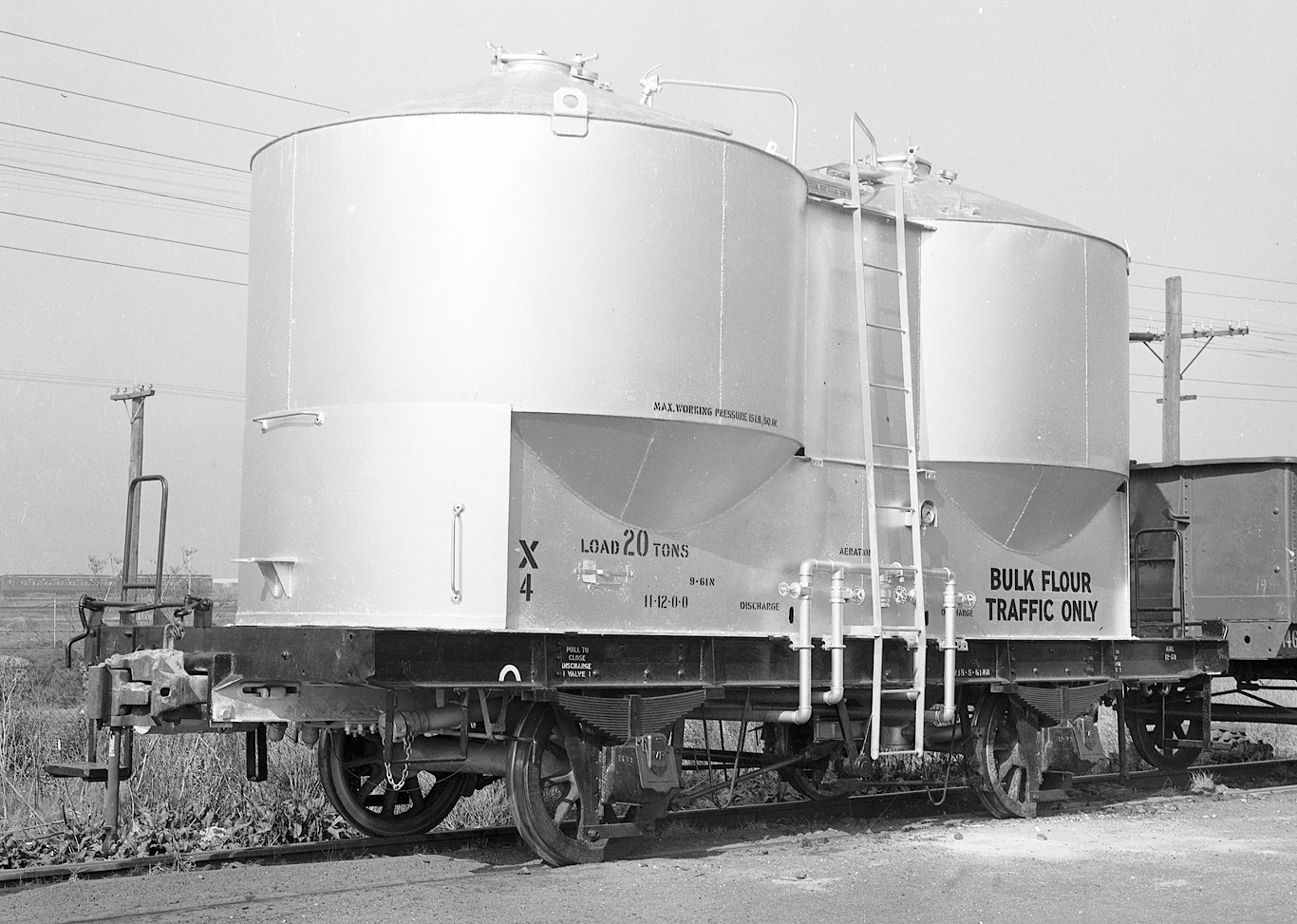J cement hoppers
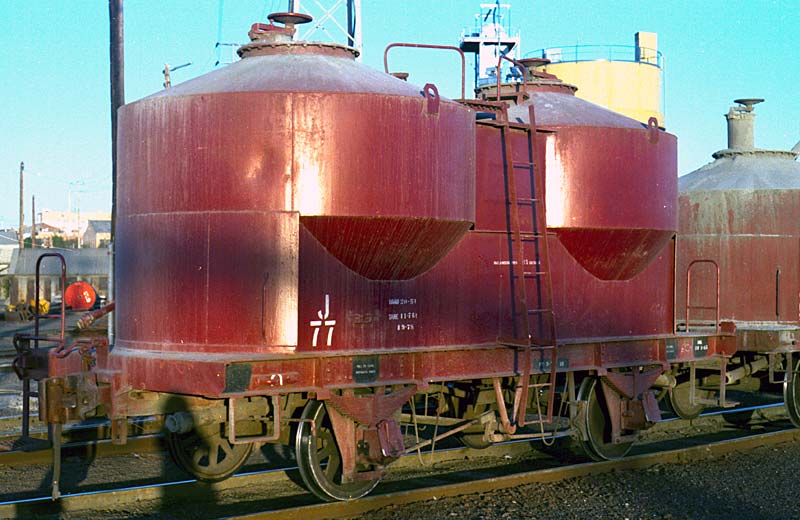
|
J 77 holds the distinction of being the last completely new 4 wheel wagon VR ever built, 1962. Photo at Arden St. 1978.
|
|
The J's have a rather complicated history which I have summarised in the table below. 1 - 7 trace their roots to carrying pulverside brown coal for steam locos. When this traffic ended they went into flour traffic as X, FX and FJ. Later deliveries were built as X's for cement traffic. X was not a good code to use because after the SG reached Melbourne the letter X at the end of a code signified a wagon that could be bogie exchanged thus the recode to "J"
In later years (1980's) J's were restricted to 30 MPH when loaded. After their revenue days ended (mid 80's) yet another commodity was carried. At least one J saw service as "Dry Locomotive Sand" service where sand was transported to country loco depots. |
|||||||||||||||
| late 70's # | BUILT CODE/# | FINAL CODE/# | |||
| J 1 - 7 | CK 1 - 7 (1949 - 1952), pulverised brown coal traffic | to X 1 - 7 (1958 - 1959) | to FX 1 - 7 (1961 -1962) flour traffic | to FJ 1 - 7 (1963) flour traffic | to J 1 - 7 (1971 - 1972) cement traffic |
| J 8 - 40 | as X 8 - 40 (1959 - 1962) | to J 8 - 40 (1963) | |||
| J 41 - 42 | as X 41 -42 (1960) | to J 41 - 42 (1963) | to FJ 11 - 12 (1967) | to J 41 - 42 (1972) | |
| J 43 - 44 | as X 43 - 44 (1960) | to J 43 - 44 (1963) | |||
| FJ 8 | as X 45 (1960) | to J 45 (1963) | to FJ 8 (1964) | ||
| J 46 | as X 46 (1960) | to J 46 (1963) | to FJ 10 (1965) | to J 46 (1971) | |
| FJ 9 | as X 47 (1960) | to J 47 (1963) | to FJ 9 (1964) | ||
| J 48 - 77 | as X 48 - 77 (1960/62) | to J 48 - 77 (1963) | |||
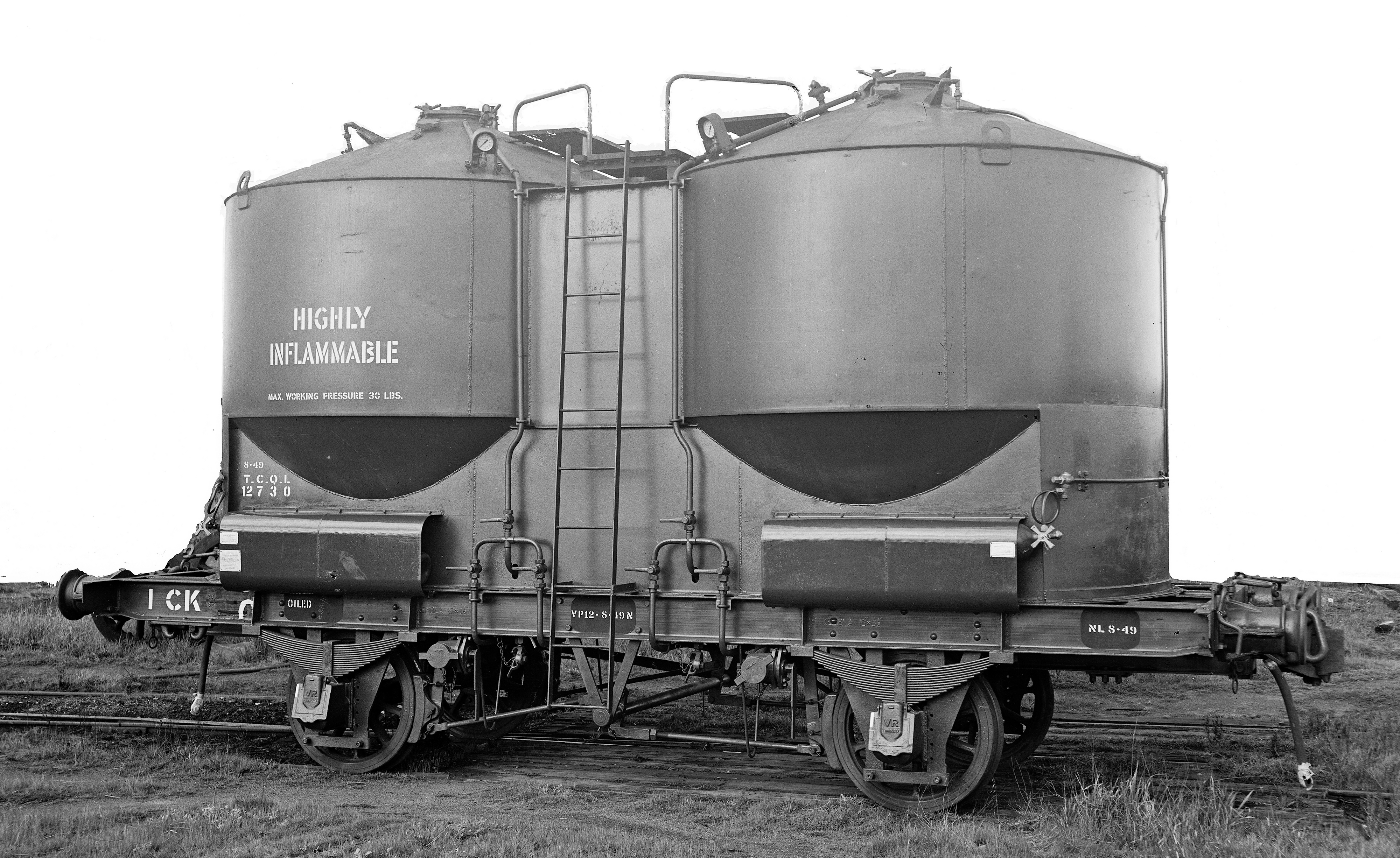
ABOVE: CK 1 as built 1949. CK 1 eventually became J 1 shown below.
Official VR photo (Peter J. Vincent collection)
ABOVE & BELOW: After the pulverised brown coal traffic finished (1958) CK's 1-7 were recoded to X 1-7 and put into flour traffic, They were quickly recoded to FX in 1961
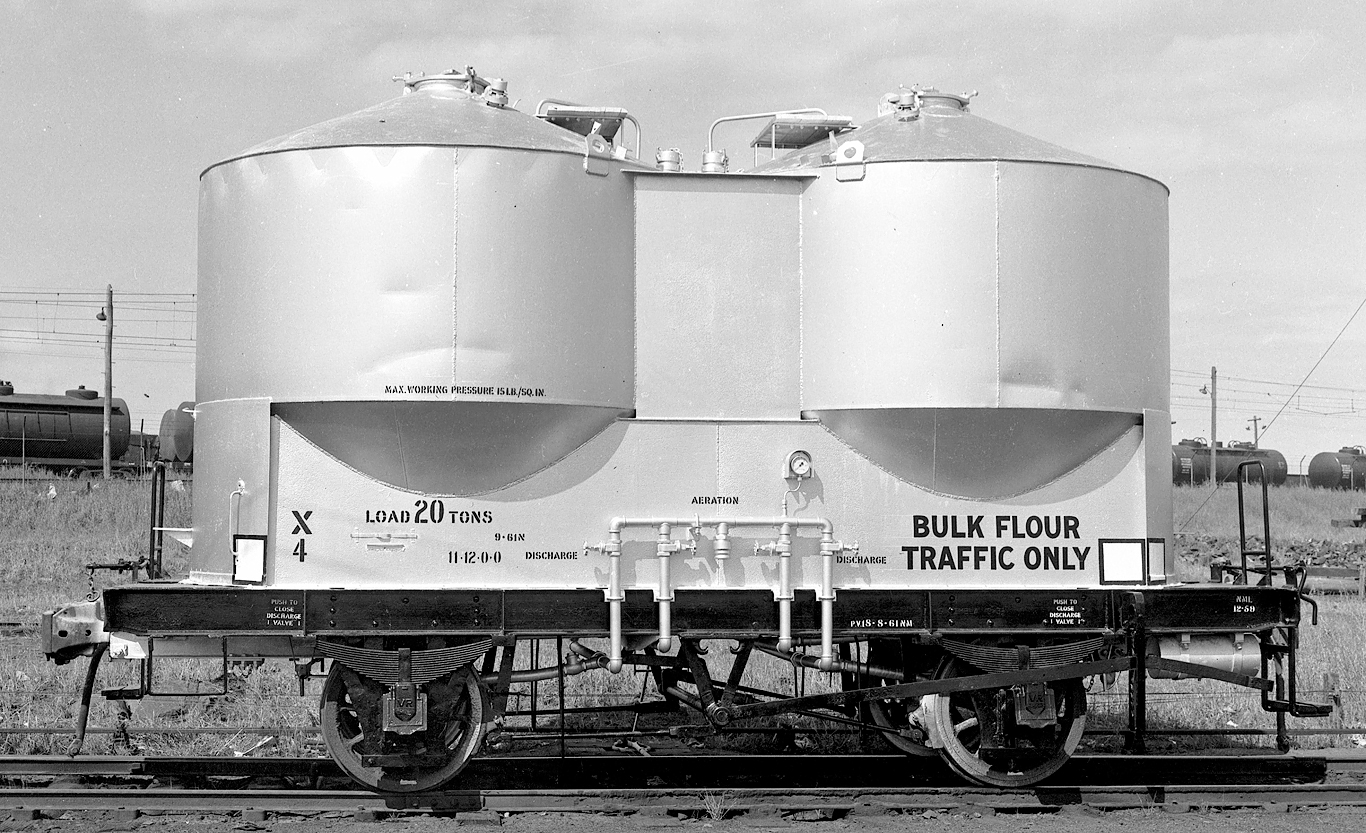
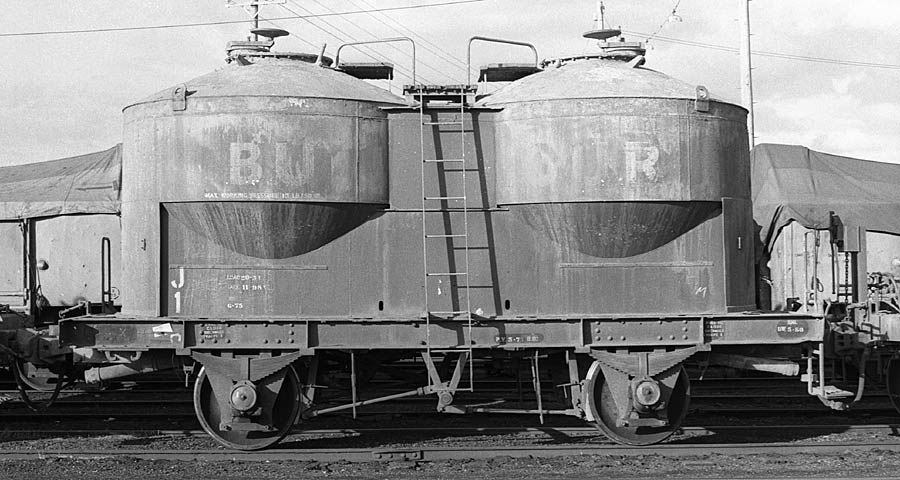
|
ABOVE: J 1 photographed in 1979, 30 years after the above photo of CK 1 was taken. Note the reduction in size of the hopper and the weld marks on the hopper. Old "BULK FLOUR" lettering can be seen under the grime.
|
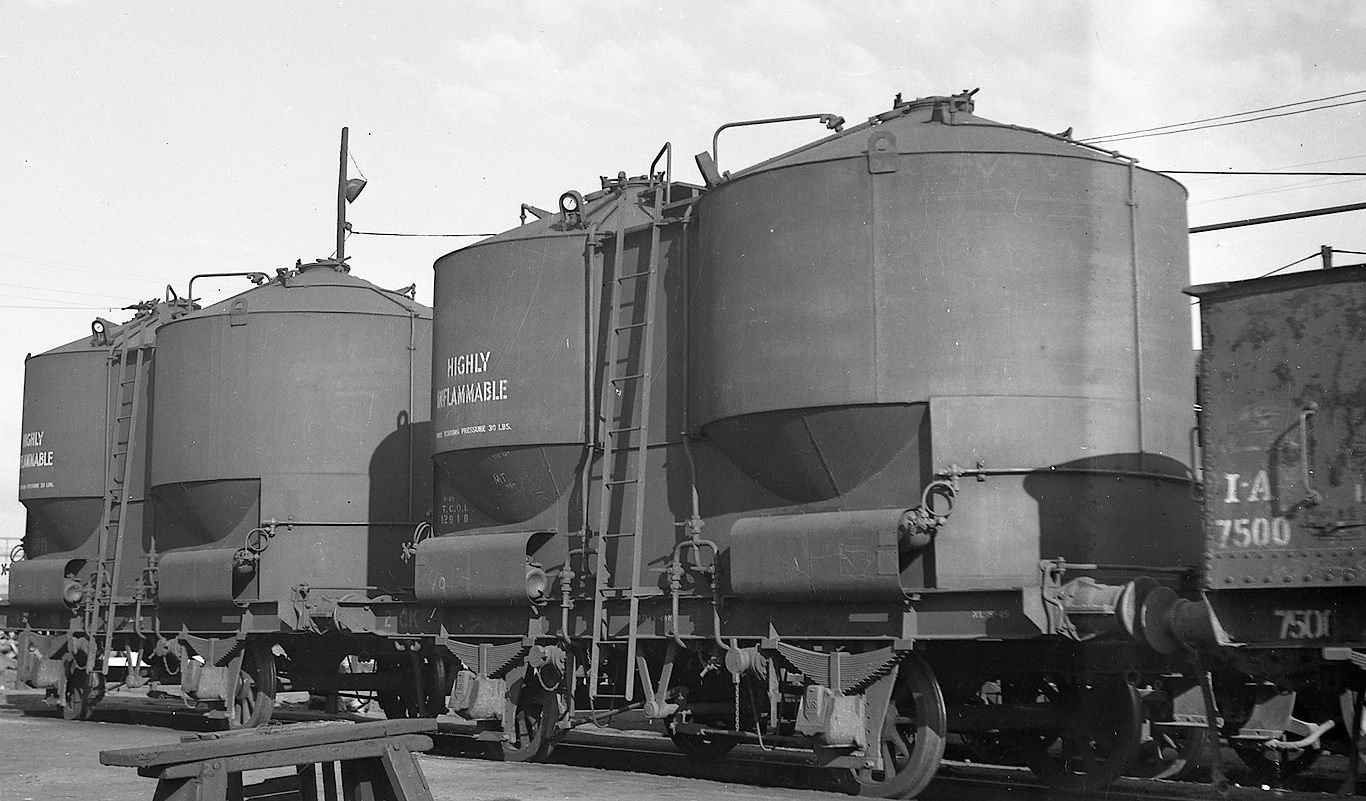
ABOVE: CK 2 and an unidentified CK circa mid 1950s, the following two photos are of the same wagon. (photo courtesy Brian McClure)
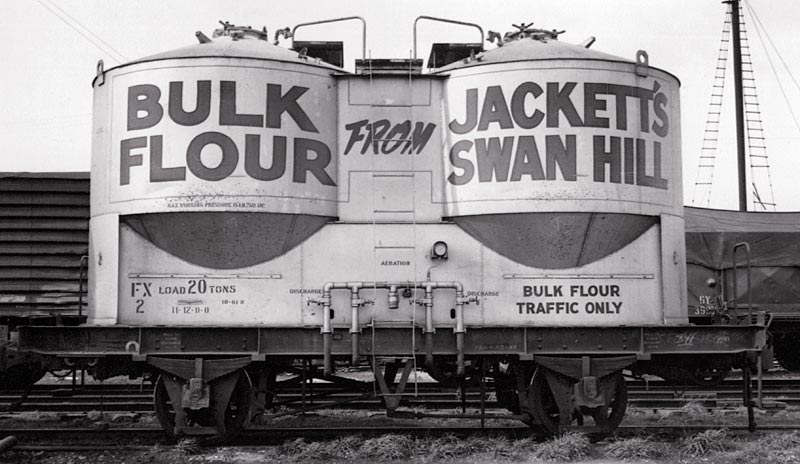
|
ABOVE: The FX code was very shortlived (1961 - 1962) and only applied to 1 - 7. The FX code was re-used for 17 bogie hoppers built in 1966.
BELOW: The same wagon, in its final re-code is shown below in 1978. Like CK 1/J1 shown above, J 7 had its hoppers reduced in size for cement carrying. |
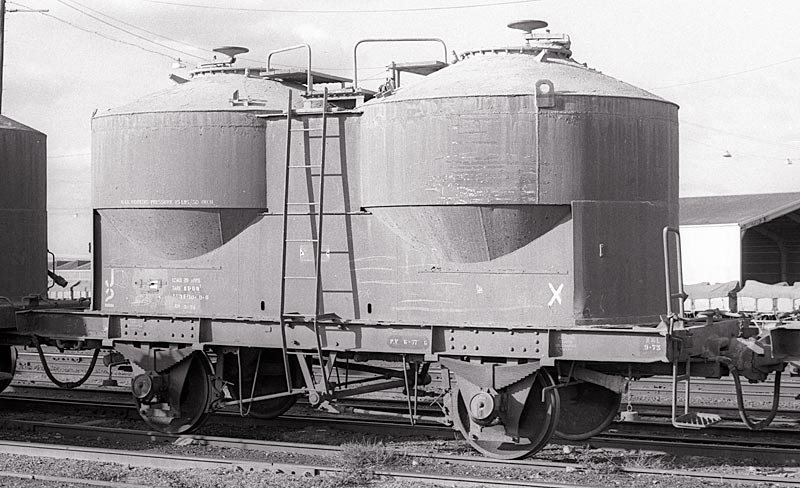
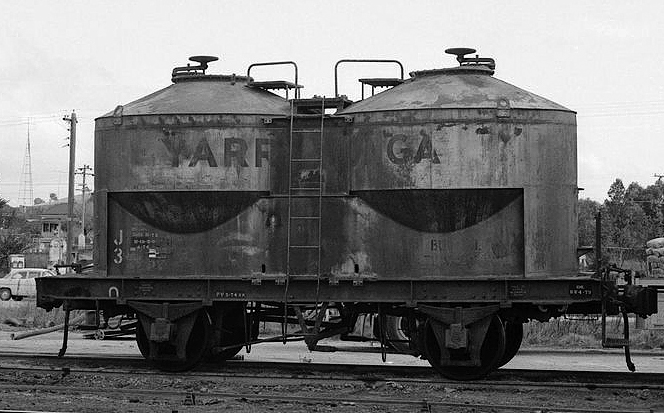
ABOVE: J 3 in 1975
photo courtesy Peter J Vincent
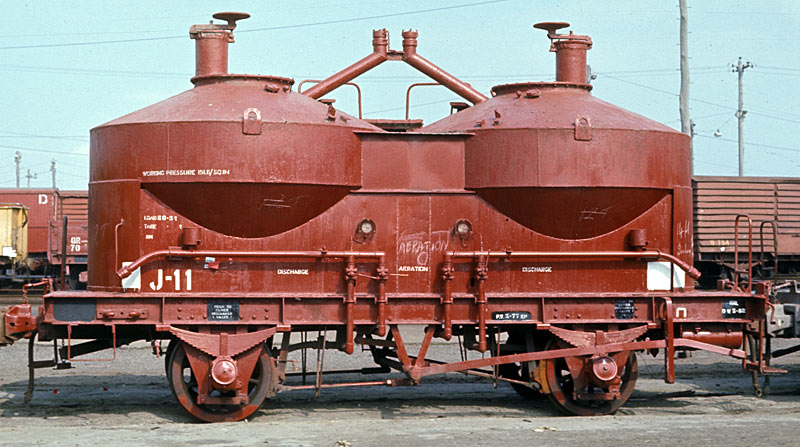
ABOVE: J 11 at Nth Melb workshops, April 22 1977
Photo courtesy Peter J. Vincent
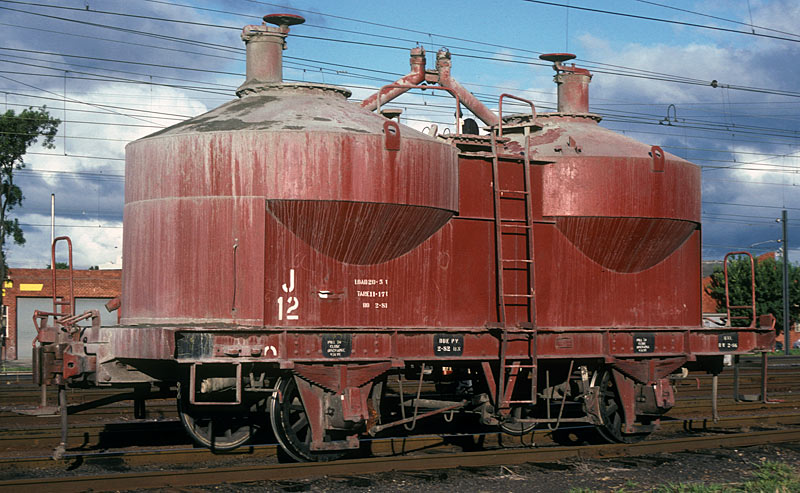
ABOVE: J 12 at Dandenong, Nov 16 1981
Photo courtesy Peter J. Vincent
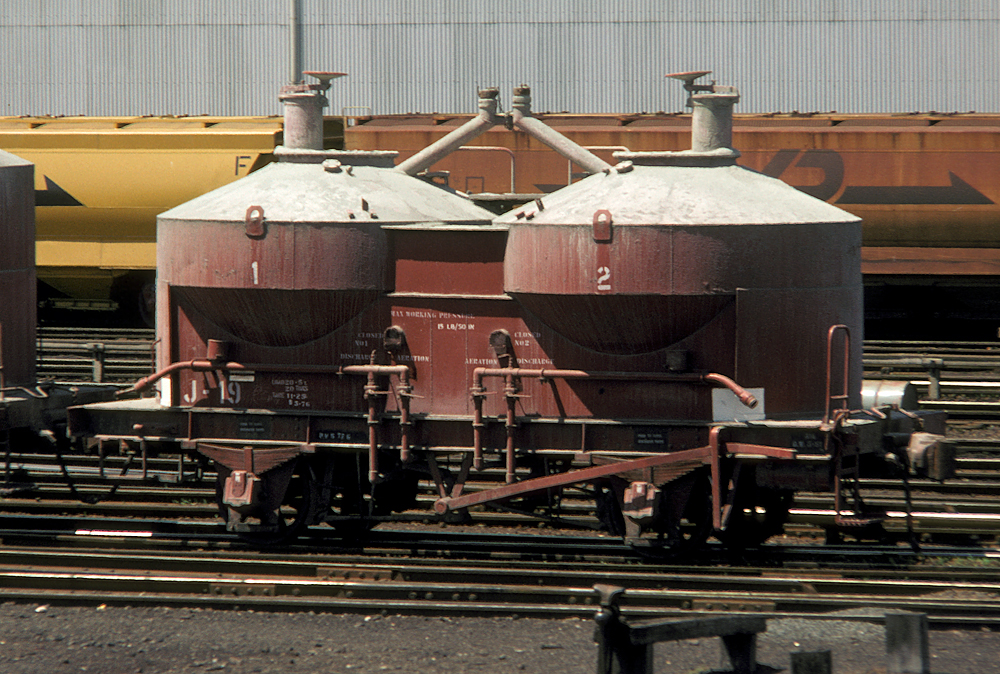
ABOVE: J 19 at North Geelong, Feb. 1976
photo courtesy Geoff Winkler
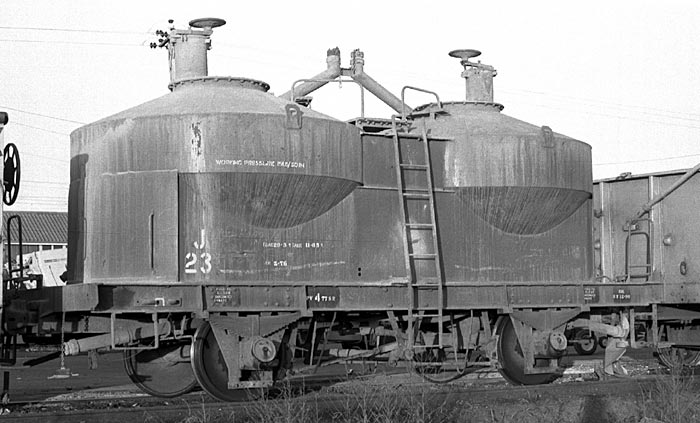
ABOVE: J's 8 - 27 were of a different design to the rest of the class as shown in the photo of J 23 taken in 1978
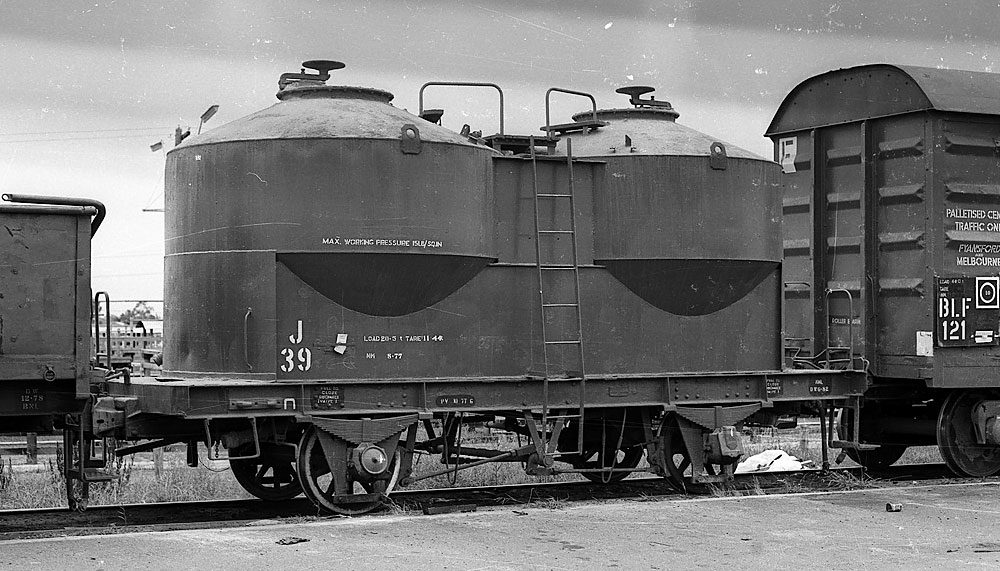
ABOVE: J 39 at Dandenong. Feb 1978
BELOW: X 39 under construction at Newport workshops 1960
official VR photo M 7039
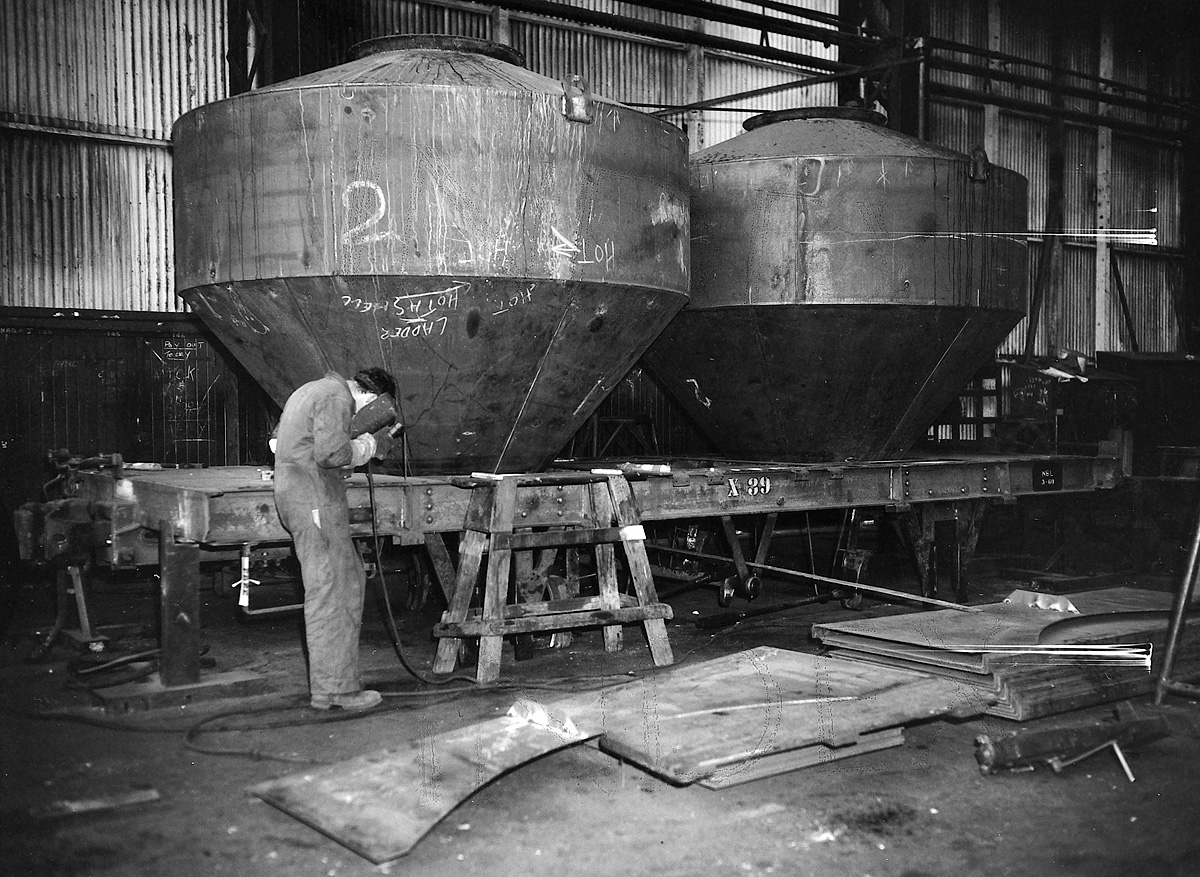
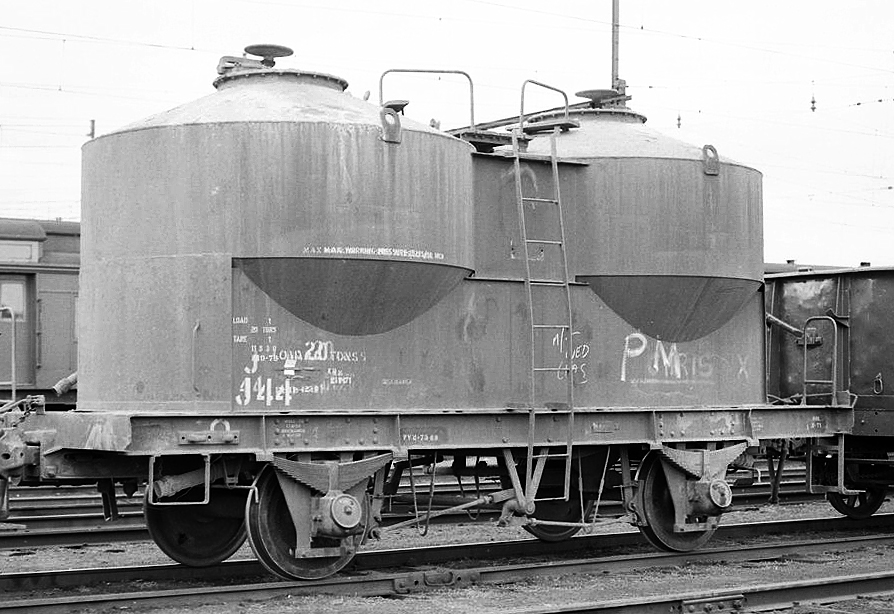
ABOVE: J 44 in 1976
photo courtesy Peter J Vincent
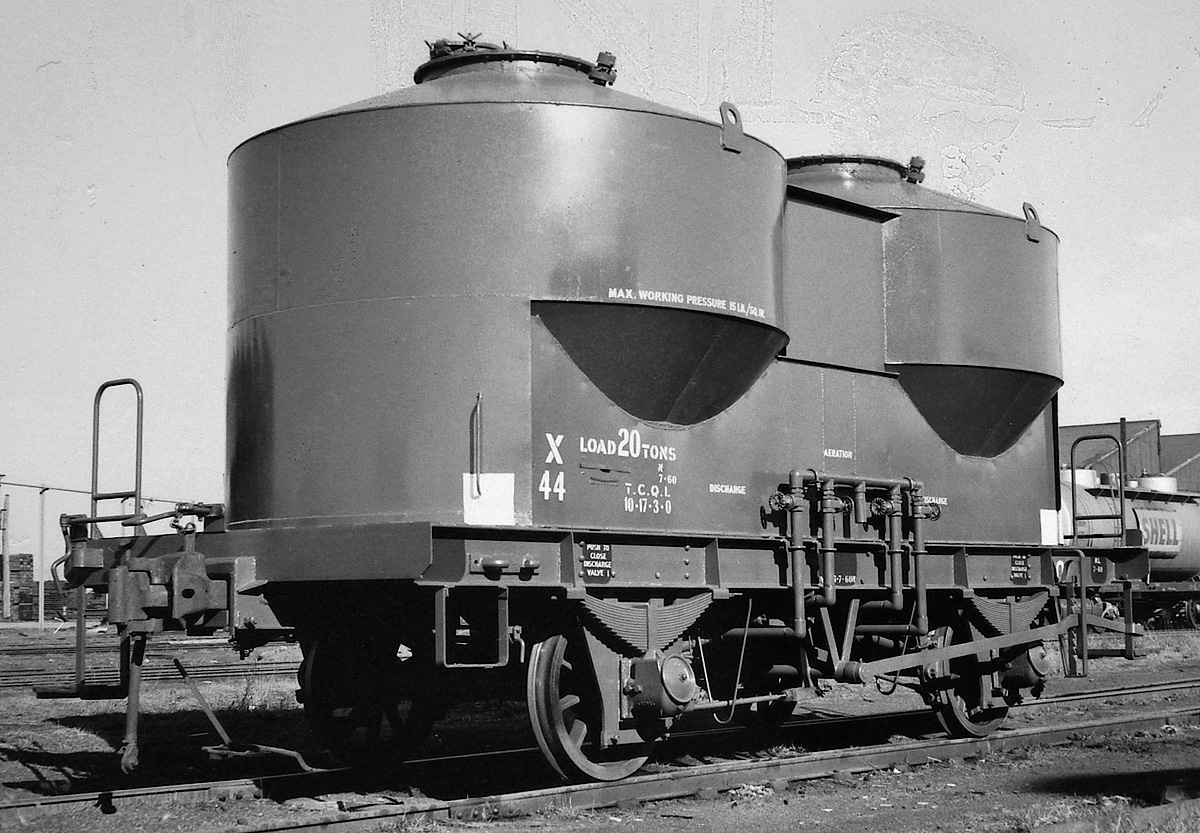
ABOVE & BELOW: X 44 (as built) at Newport, July 1960
official VR photo
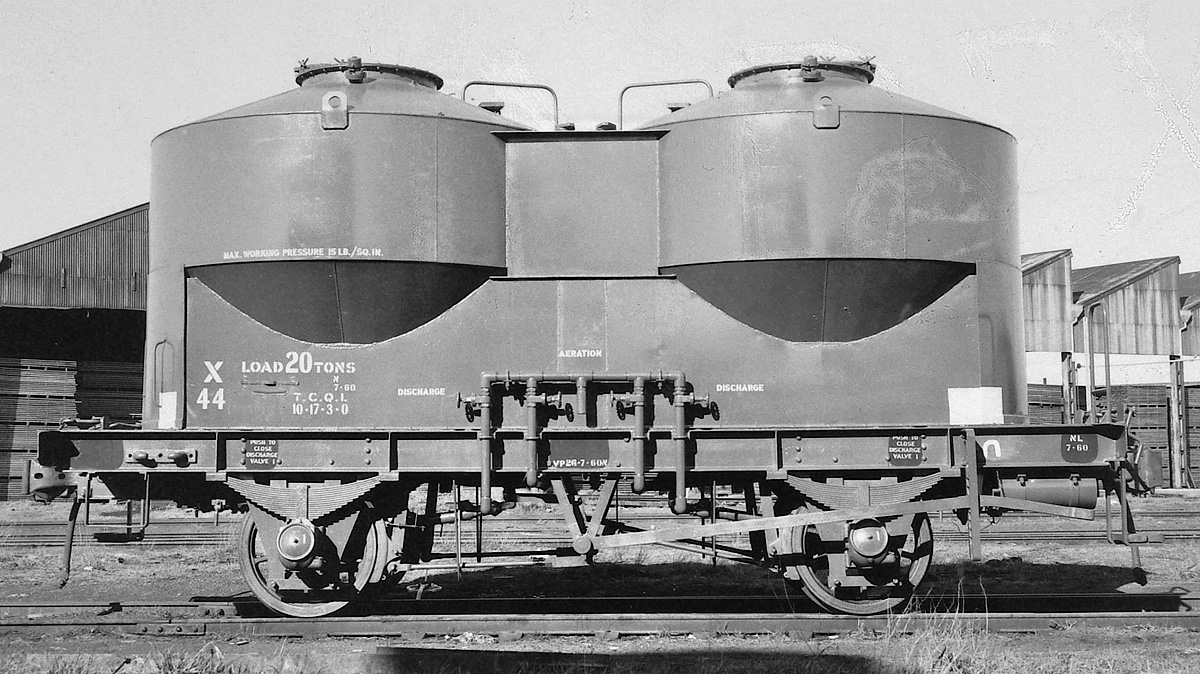
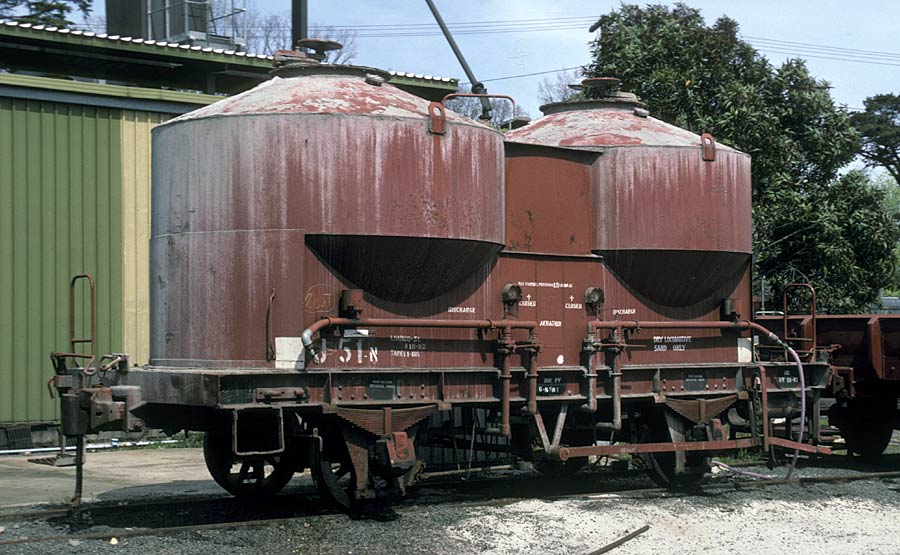
ABOVE: J 51 at Ararat, Nov. 1987 in locomotive sand service.
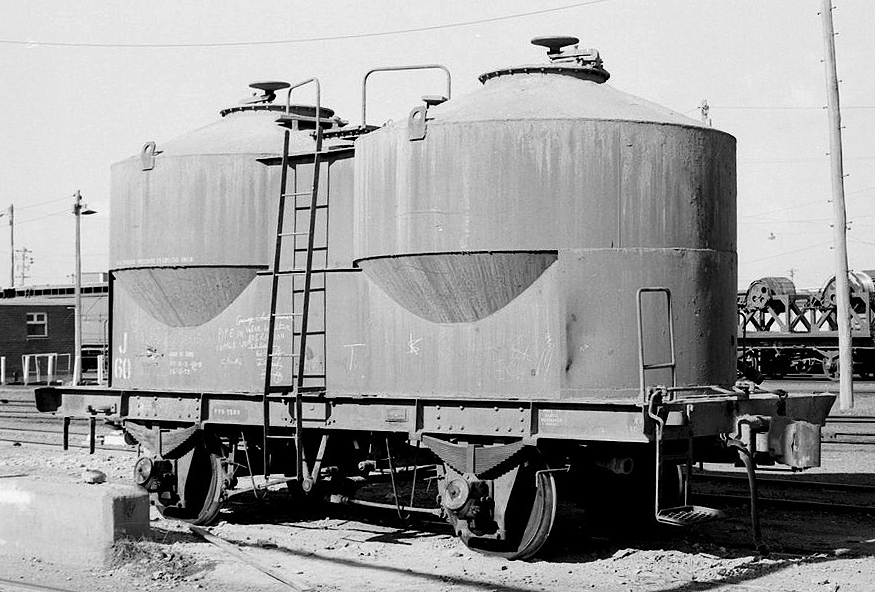
ABOVE: J 60 at Nth Melbourne workshops 1976
photo courtesy Peter J Vincent
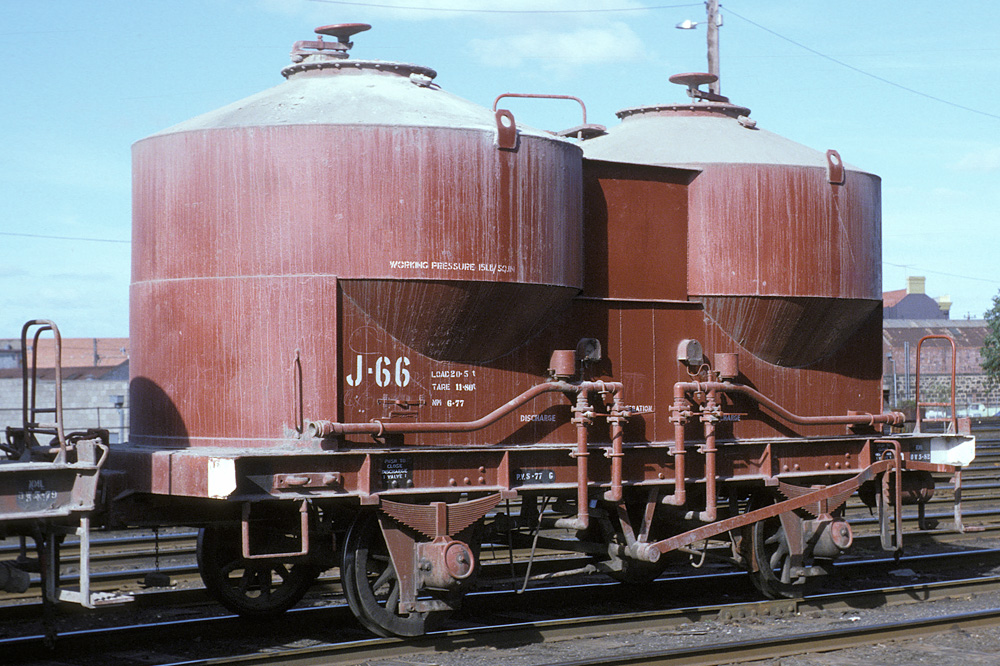
ABOVE: J 66 at Geelong April 27 1978
photo courtesy Geoff Winkler
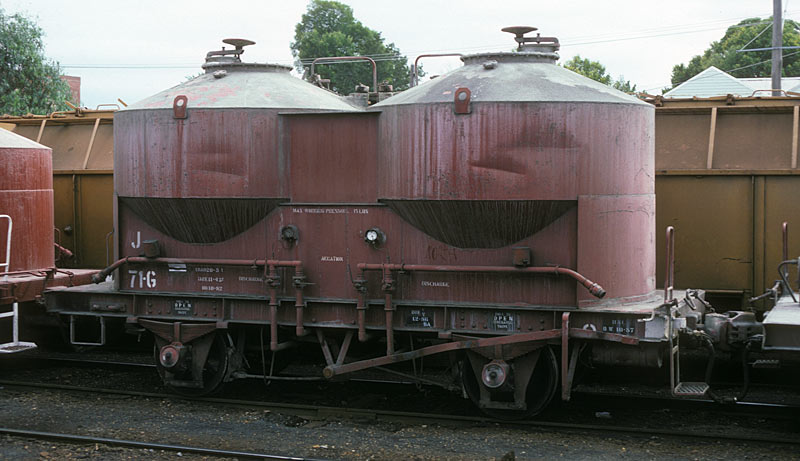
ABOVE: J 71 at Seymour, April 20 1986
Photo courtesy Peter J. Vincent
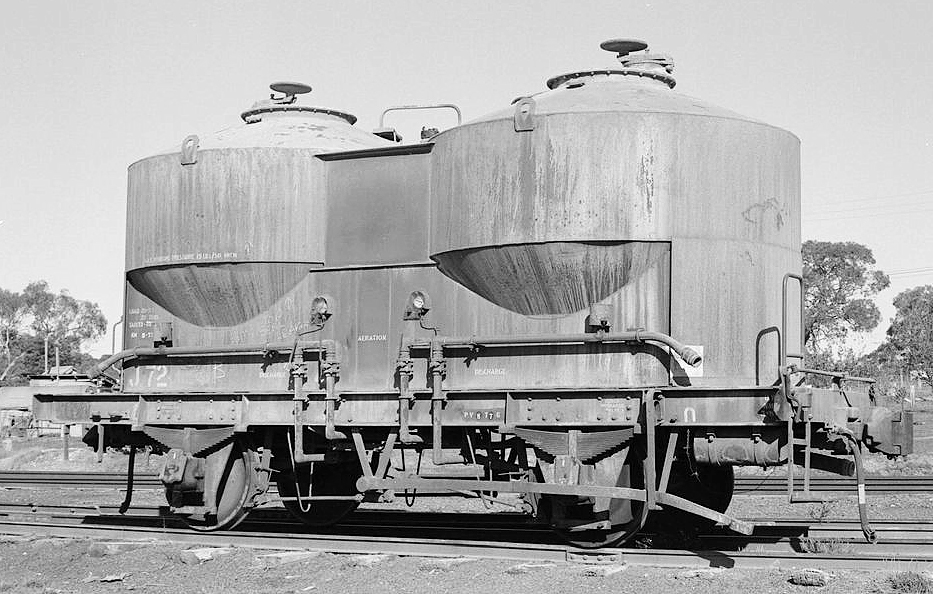
ABOVE: J 72 in 1978
photo courtesy Peter J Vincent
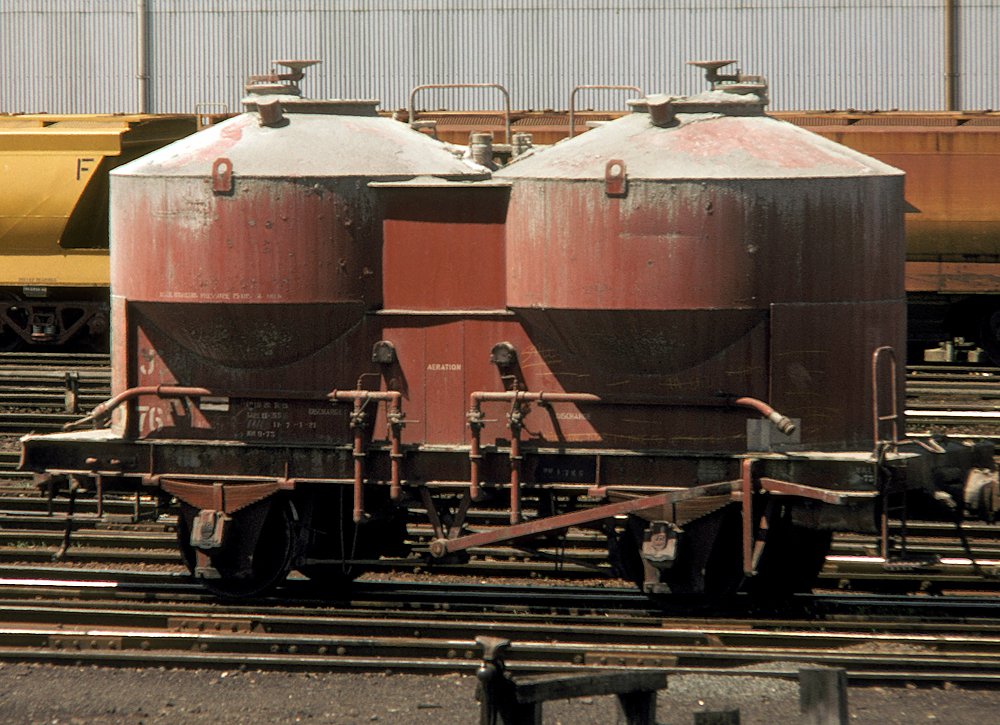
ABOVE: J 76 at North Geelong, Feb. 1976
photo courtesy Geoff Winkler
The article below is from the July 1958 VR newletter
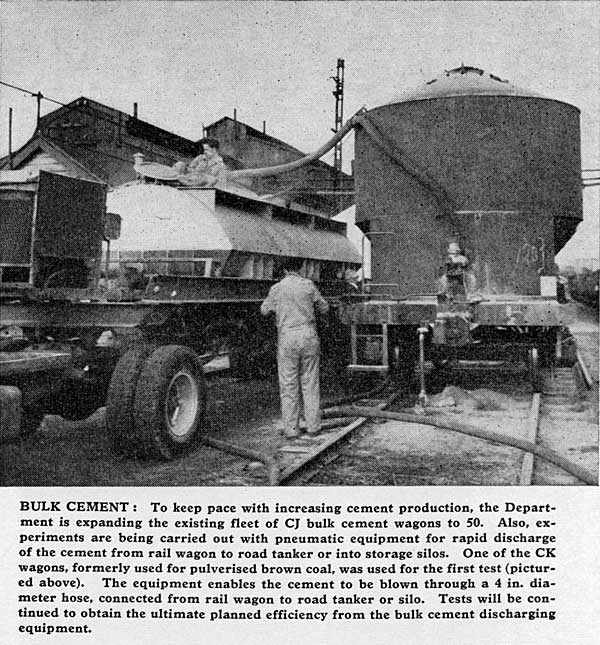
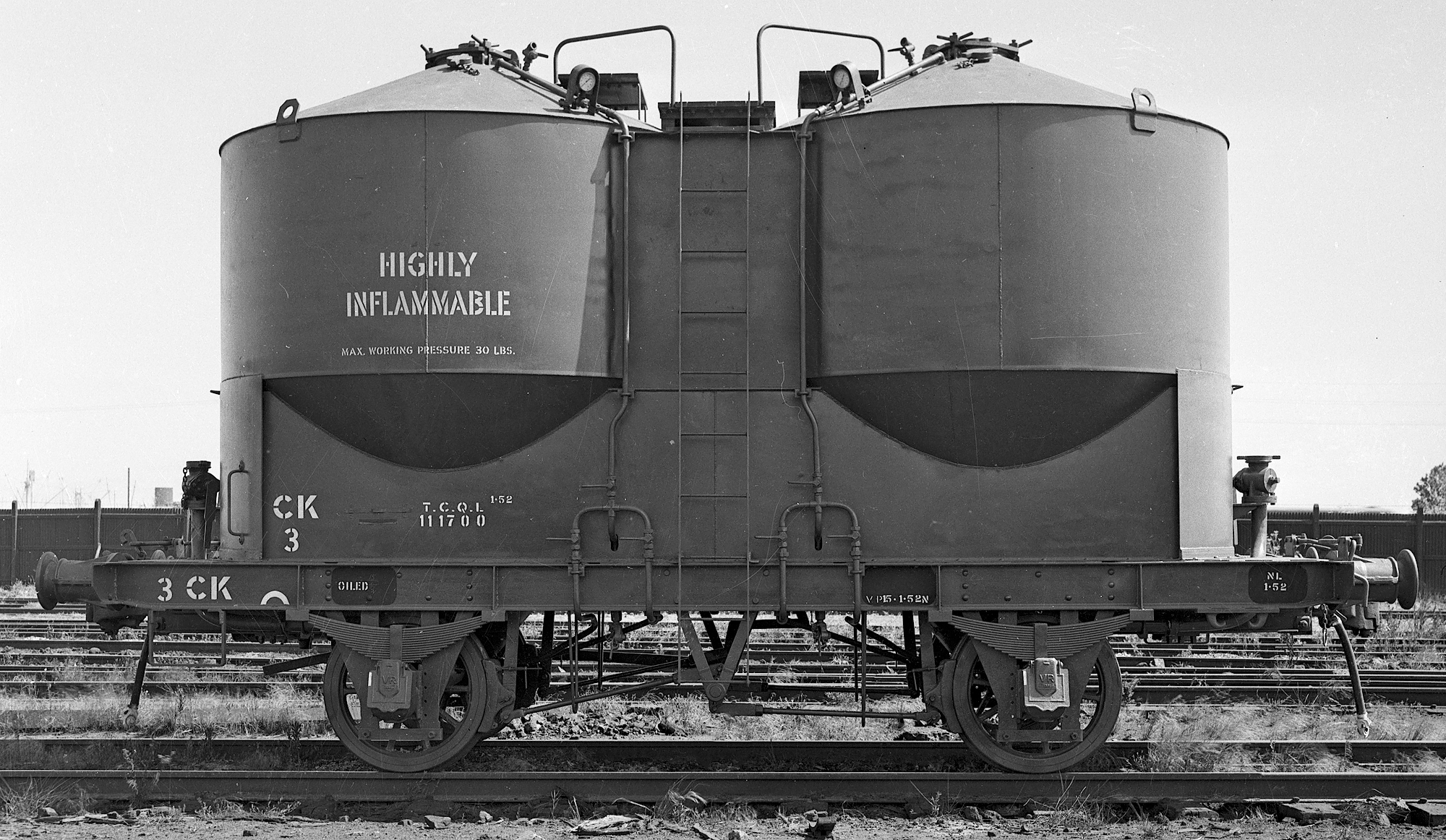
ABOVE: CK 2 circa 1952. It ended up as J 2, see photo near top of page. (PROV photo)
 |
 |
 |
 |
|||||
Page last updated
